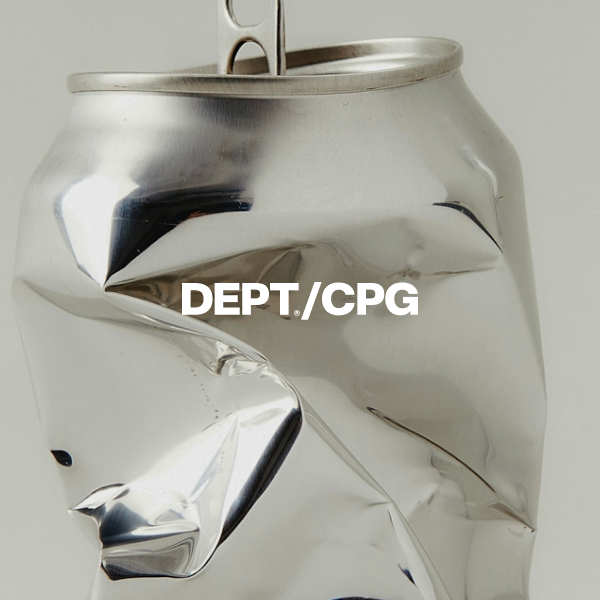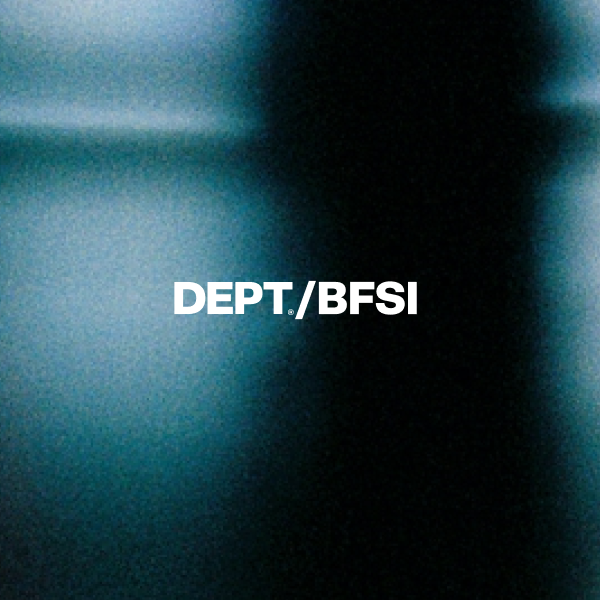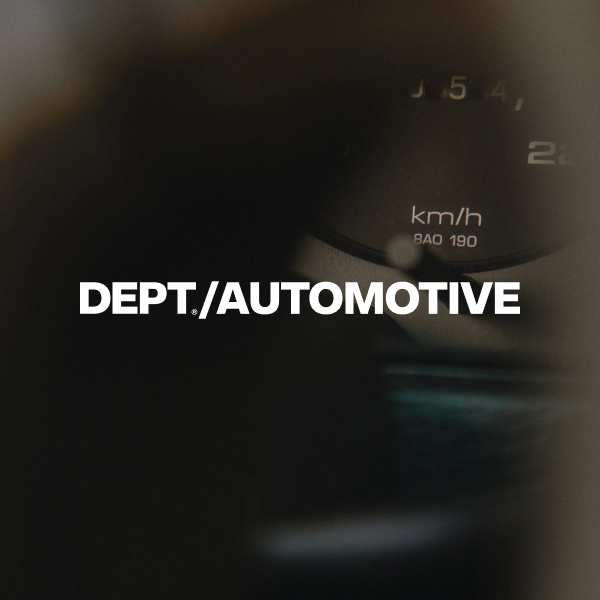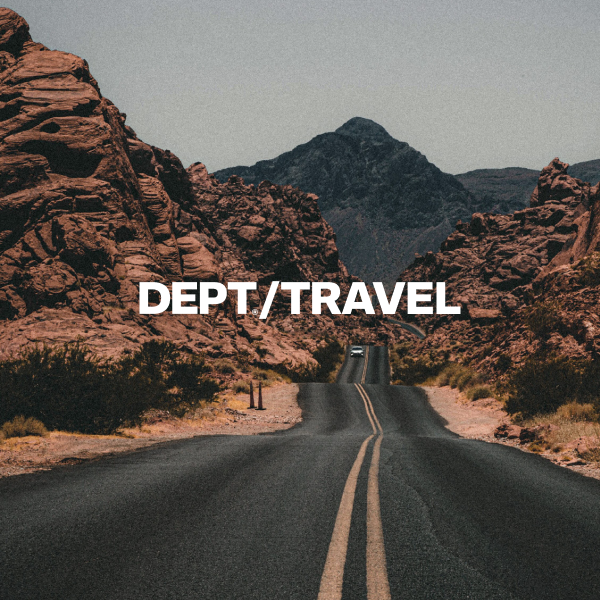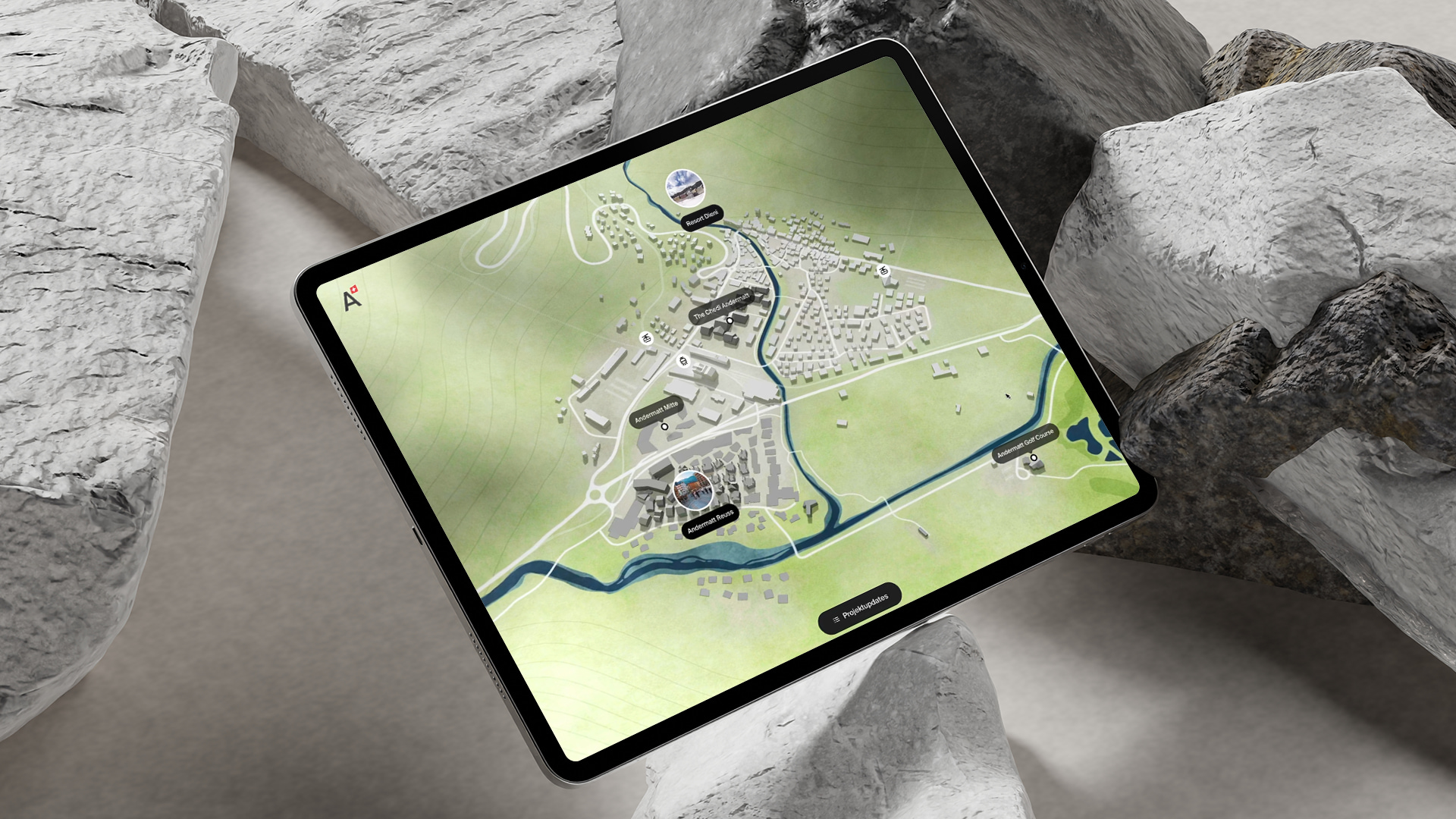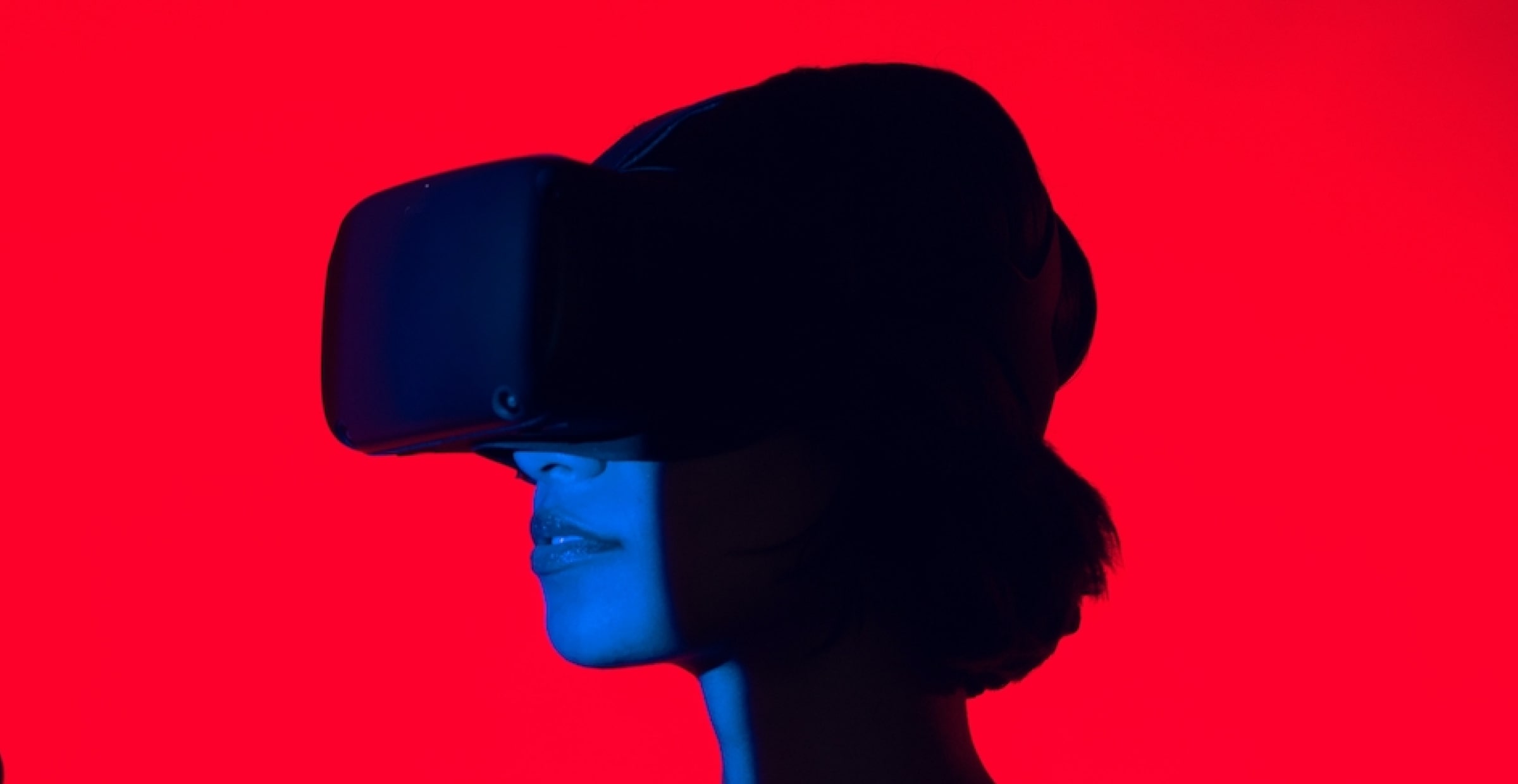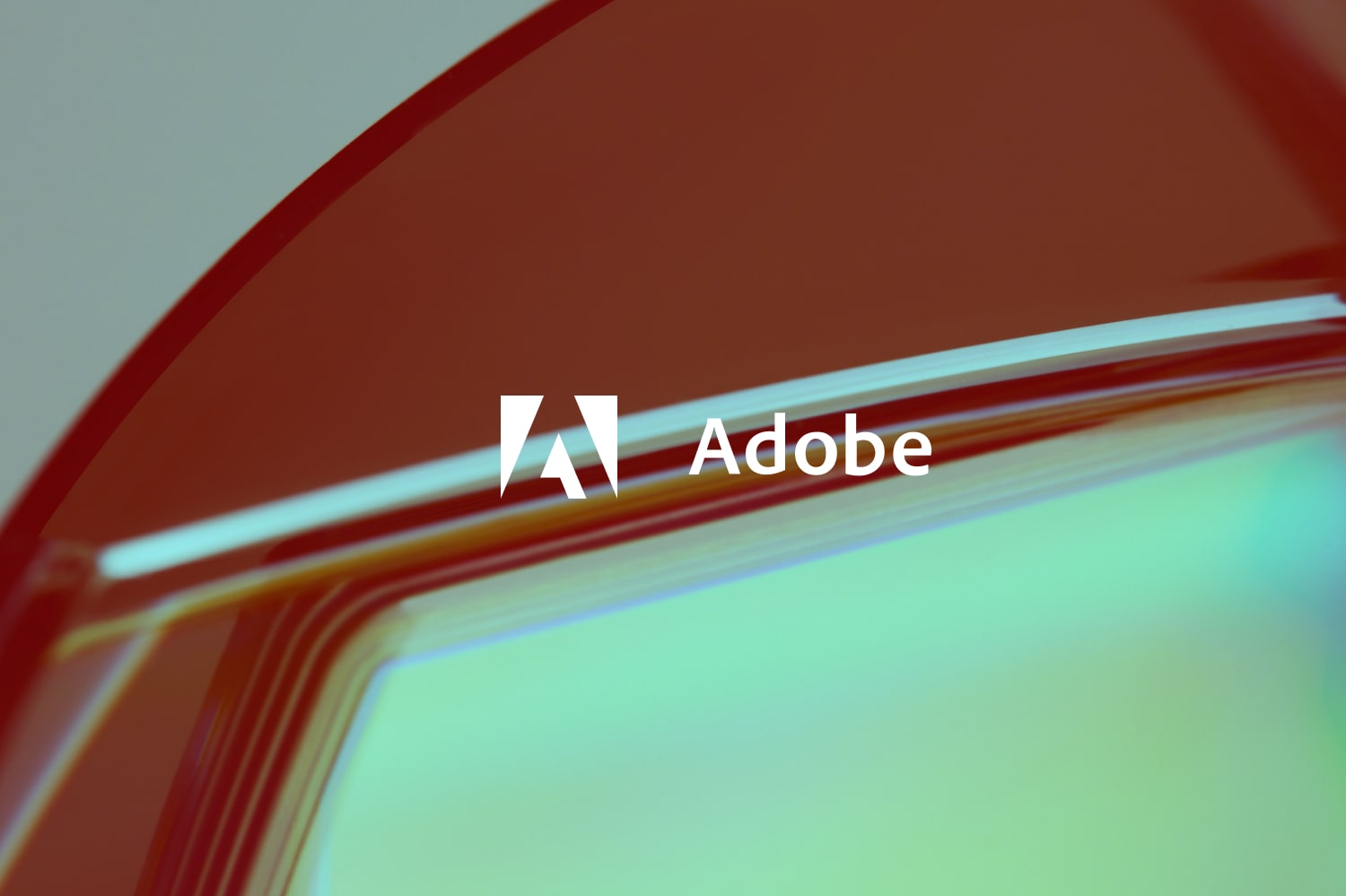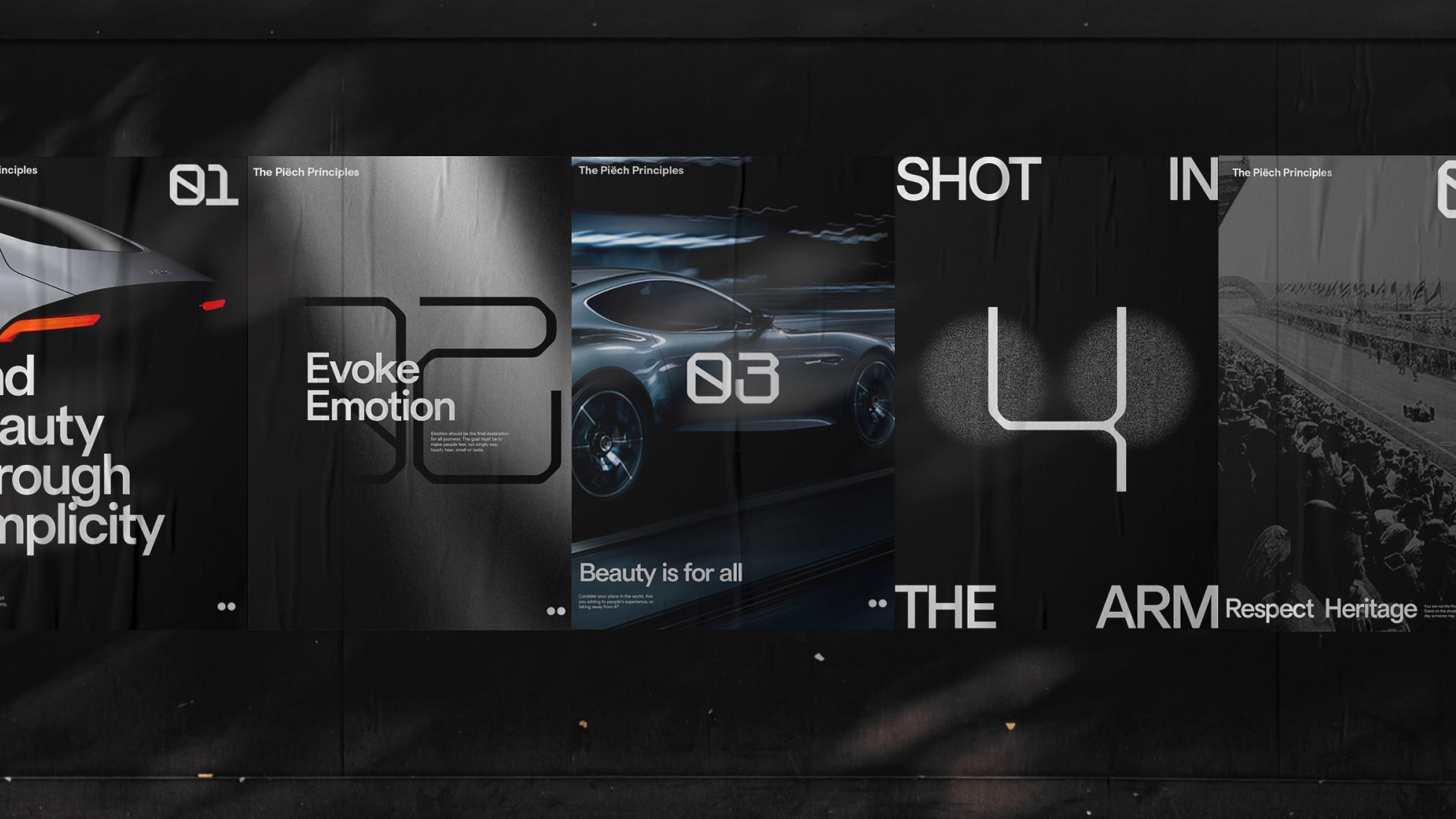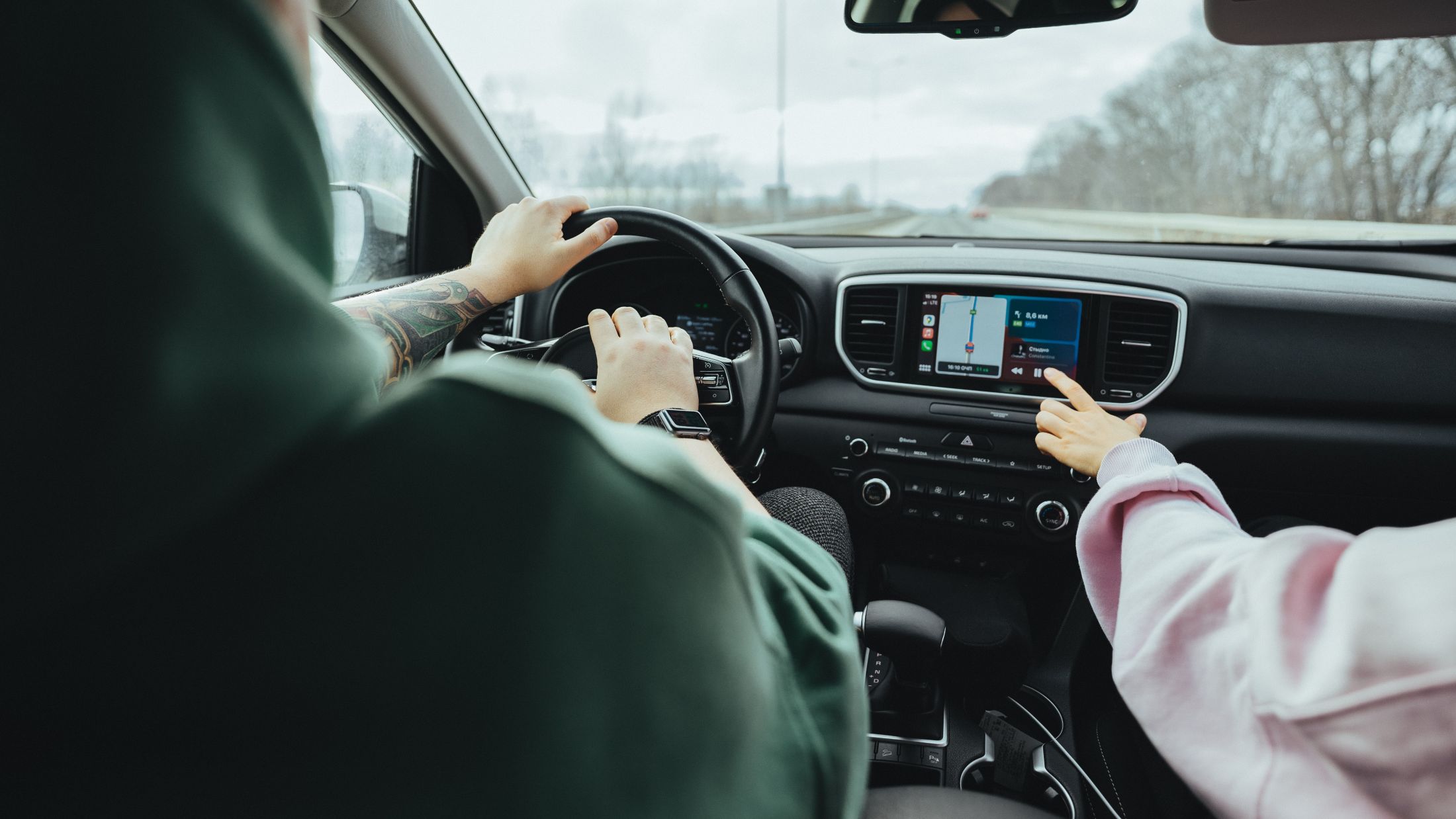In 2023, Audley Travel, a market-leading travel company with a stronghold in the US and UK, found themselves at a crossroads. Well-known for curating tailor-made holidays across 90 countries, the company wanted to provide a more rounded and personalised client experience.

Audley uses Salesforce as their CRM technology of choice, and following a collaborative discovery session between the three organisations, DEPT® (as a Salesforce premium technology partner) proved to be the natural choice to implement Marketing Cloud to revolutionise Audley’s cross-channel marketing efforts. And so we seized the opportunity to mark a transformative chapter in Audley’s email marketing journey.
The objective: re-engaging users
Audley Travel had a straightforward yet ambitious objective: to launch three high-ROI use cases rooted in user website behaviour. Utilising AI-based product recommendations by Salesforce’s Einstein, the intent was to re-engage users who had abandoned an itinerary, a destination, or an enquiry page by sending them a tailored email reminder one day after their initial interaction. These emails were designed either to nudge the user toward completing their booking or to present curated itineraries that aligned with their most-viewed destinations.

Unveiling the power of Marketing Cloud Personalisation
By implementing Marketing Cloud Personalisation, Audley Travel laid the foundation of its first-party data strategy, effectively creating a walled garden of proprietary customer data. This approach not only allows for a nuanced understanding of customer behaviours but also empowers the brand to build powerful user segments for targeted campaigns.
Leveraging AI-driven recommendation systems, each email is dynamically personalised according to user affinities such as destination and itinerary interests, as well as incomplete forms. This personalisation strategy is underpinned by the collection and analysis of user behavioural data across various digital touchpoints, providing valuable insights into the customer journey. Specifically, these touchpoints encompass both our website and email interactions. On the website, we track a user’s behaviour down to the minutiae – what pages they visit, the itineraries they explore, categories and destinations they express an interest in, and even the duration of time they spend on each itinerary. Similarly, within our email campaigns, we closely monitor metrics like email open rates and timestamps to understand the optimal timing and content that resonates with each user.
In doing so, Audley Travel succeeds in breaking down existing data silos, gaining a robust understanding of their customers’ online behaviour and needs, thus setting the stage for a seamless cross-channel experience.

In summary: personalisation meets performance
In just a few months, Audley Travel and DEPT® rolled out a fast, ROI-driven personalisation strategy through Marketing Cloud. This quick implementation met key revenue targets and gave Audley the flexibility to adapt to customer needs and market changes. The project serves as a key milestone, offering Audley an adaptable framework that aligns well with their long-term business objectives that focuses on and improves the overall customer experience.
Explore DEPT®/TRAVEL, our team of specialists pioneering solutions to help travel brands to grow sales, and utilise data & AI to create best-in-class experiences.
Questions?
Marketing Automation & Client Director
Katrine Andersen
Discover more
There is a tendency in the B2B e-commerce sector to look across to the top B2C brands and play down the applicability of the features and techniques that make their sites market leaders. The idea that stylish sites and flashy features only fit the B2C model, while B2B should focus on the bread and butter options to fit the typically measured and professional tone of voice that many B2B brands use. This is misplaced thinking, based on the division of B2B and B2C. In reality, there are businesses, there are customers, and there is e-commerce. Shopper psychology spans across each; the features that allow B2C brands to excel in the online space are there because they work. Chiefly, personalisation.
Personalisation has always played a role in commerce. In the past, personalisation existed in retail as an in-store assistant, and in industry as a sales rep that would build a relationship with the customer over time, learning their needs, their pain points and how they liked to conduct their business. These approaches have always led to a much improved buying experience; faster, easier and more accurate. But these relationships take time to build; it’s a long term process of listening, learning and responding. And while human-to-human contact is still very much valued, digital technology, data tracking and analysis can bear the load. When implemented well, personalisation can speed up sales cycles and nurture prospects into loyal customers.
Advancements in digital technology have radically cut the time it takes to understand each individual customer and provide a personalised commerce experience. This technology is widely available, often built in to your content management system; all businesses now have the ability to implement personalisation strategies into their marketing and commerce efforts. This is good news, seeing as smart personalisation engines used to recognise customer intent can lead to an average profit increase of 15%. The flipside to this, is that personalisation has moved from an added benefit of certain businesses to an expected feature across every experience. 33% of consumers abandoned a business relationship last year because of a lack of personalisation. This is a necessity, not a nice to have feature.
Utilising account specific data
When starting to think about how your business can use personalisation in its commerce sales funnel, begin by thinking about how the company can collect data about customers and visitors. It’s important to begin with data capture, as the implementation of features depends on the type of data collected.
For specific customers, data primarily comes through the account creation process: job function; past purchases; which pages they have previously visited on the site; their dwell time; on-site search history, and so on. If the current data collection on account creation is limited, build this out for future customers and consider requesting current users to update their profile with more information upon their next login. Rather than hiding the motive, make it clear that the company will be using the data for an improved, personalised shopping experience. This clarity will boost the numbers opting in to data sharing, as it clearly offers a mutually beneficial exchange.
Putting this in place, electronics manufacturer Omron was able to create a site that adapts to the needs of each visitor. By using information on the job function of each logged in visitor, the Omron site could dynamically adapt and funnel distributors, systems integrators, Omron employees and end users to the appropriate pages. This is a simple solution, using just one piece of data to adapt the site, but it has a major impact, with the ability to scale up personalisation based on further gathered information.
Making use of automatically data
Thinking about data capture also means thinking about the information that is automatically collected when a user visits the site, whether logged in or not. Their location data, the search term that brought them to the site, their onsite user journey – all of this information can inform your personalisation approach. Personalisation based on this information is subtle, possibly unnoticed as the visitor explores the website. They may not recognise the personalised experience, but will come away thinking that the shopping experience was quick and easy.
This also applies to classic customer segmentations, a general grouping based around shared behaviours. Personalisation doesn’t always mean single individuals. These segmentations can be useful when thinking about broader data automatically collected by new visitors to the site, as the depth of information isn’t there to create an individual response. As an example, an electronic parts company could use site search data to establish a segmentation that prominently displays associated purchases to visitors.
With an understanding of how data is collected, your business can begin planning the execution. At this stage, think in terms of what can be done onsite and off-site. While it is easier to control the onsite content and design, focusing solely on the website can see businesses missing out on the opportunity to fine tune their contact with customers through advertising and direct messaging.
Dynamic content
Onsite, dynamic content is a useful tool to make use of. This is content that adapts based on the data that is fed into the CMS, whether it is account data, previous purchases, search terms, and so on. The most obvious use is often found in the leisure and tourism space; if a visitor clicks on a number of pages relating to Italian destinations, the site can adapt the background images on more general pages to show Rome, Venice and Florence.
In the B2B space, dynamic content can be used to display relevant information, based on what is known of the customer. If they have listed their job function as logistics, they can be shown contextual information on delivery times and options, while a member of the finance team will see more about pricing options and different payment plans.
Accelerating everyday tasks
Speeding up common processes is another use, particularly helpful when looking to keep long term customers engaged. There will be a number of actions that returning customers have to redo with each visit, the most obvious example being adding items to the basket.
This is particularly important for B2B commerce as orders can be large and complex, and customers are more likely to repeat their orders when compared to B2C. Improving reordering was a key feature when developing Brenntag’s new commerce platform, Brenntag Connect.
As a chemical distributor, Brenntag has a strict process when allowing new customers to use their service. Customers are typically placing large, identical orders, leading Brenntag to create an automation service that places repeat orders and provides relevant contextual information when customers need to make an adjustment. This is a clear indicator of why it’s important to remember that personalisation is not fitting to how customers buy, it’s fitting to how customers behave.
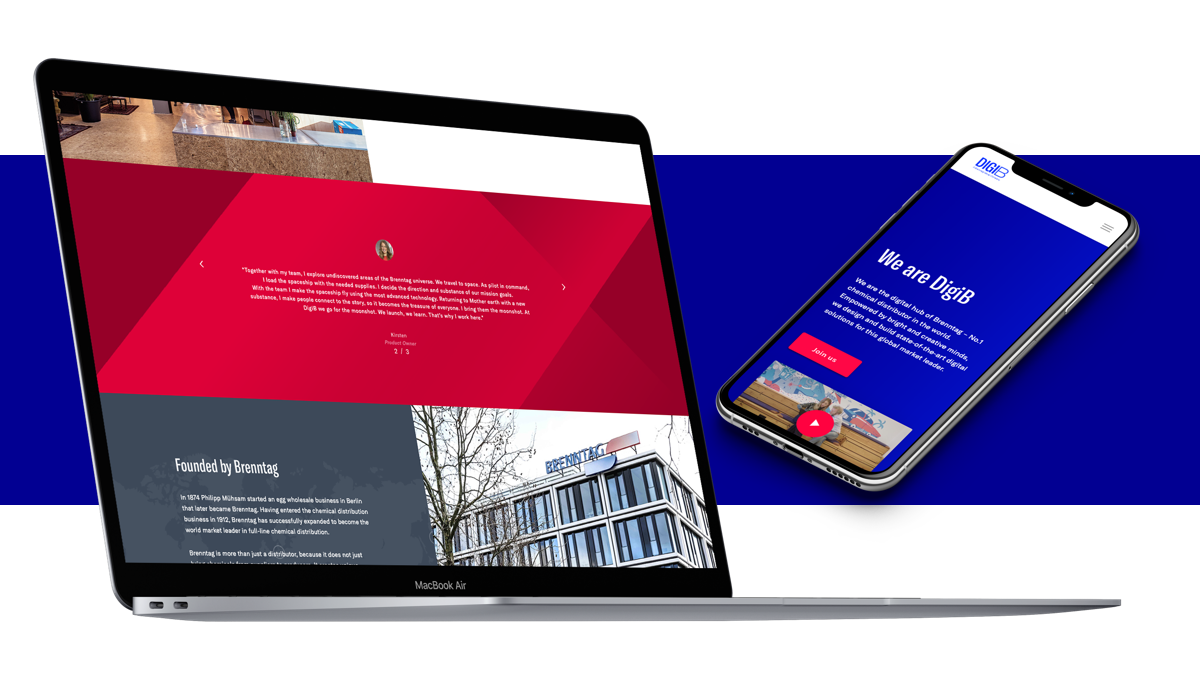
Supplying more information to upsell
When customers are returning to reorder from your company, there is an opportunity to upsell existing products and promote new ones. This goes beyond ‘customers who bought X also bought Y’. This form of personalisation should aim to suggest alterations and explain the reasoning, based on the specific customer’s order. Think of it as a digital representation of the sales rep relationship, understanding the developments in a customer’s business and reacting with new solutions.
It can also be developed into a website feature, an interactive problem solving flowchart or chatbot that allows visitors to input their problem or need and see what solutions the company would suggest.
Optimising site speed
Not every on-site personalisation improvement is interactive and clear for customers to see. Adding in predictive loading is one example, a feature that speeds up the load time for each page on your site based on similar customer journeys.
Customers may never realise that the site they visit uses predictive loading, but they will notice if a site is slow to load. Selling needs to be as smooth as possible; slow loading leads to a larger bounce rate. Installing features, like predictive loading, that uses the information gathered when analysing personalisation can ensure the process never stalls.
Off-site actions
Personalisation also applies to actions that the company makes off-site. Email is one area, automated workflows for customers that left the site without checking can bring them back, boosting conversion through reminders and specialised offers. This can similarly be used for surrounding purchases, following the frequency of repeat purchasing or the typical time it takes for a customer to branch out to a new product.
Also consider how the purchasing journey exists across different touchpoints such as apps, social media and face-to-face meetings. Is it easy to bring up the customer profile and optimise their order based on this information? This kind of integration creates a seamless experience, perfect for B2B’s longer, omnichannel purchasing journeys.
Facilitate an easier commerce experience
In each recommendation, the end goal of facilitating a faster, easier, more accurate commerce experience remains the number one priority. By hitting each aim, the business makes each customer more likely to checkout, more likely to return, and more likely to talk to people in their industry about how great purchasing from your business is. These improvements build up, a snowball effect that ultimately results in increased sales and larger, loyal customer base.
More Insights?
View all InsightsQuestions?
Commercial Director
Peter Dam-Johnsen

DEPT® Lunch Break: Creative Automation
In the fast-paced world of marketing, consumer expectations are rising. More than ever, they want personalised experiences and offers.
An ‘always on’ approach to marketing automation is critical to build relationships through a series of integrated, relevant, timely and personalised communications across multiple channels.
But in today’s digital reality, it’s incredibly difficult to deliver effective, multi-channel retention and loyalty programmes in a privacy-by-default world.

DEPT® Lunch Break: Creative Automation
Enter, creative automation. The key to ensuring every piece of creative and communication builds and contributes to the broader strategic goals of your business, helping to establish and cement relationships with your customers at every stage of their journey.
Efficiency is table stakes. But creative automation improves speed, personalisation and value-driven campaigns (at scale) to help you reach audiences when it’s most impactful.
In this DEPT® Lunch Break, we’ll uncover the power, and necessity, of creative automation in the new marketing landscape.
By the time your lunch break winds up, you’ll understand:
- What creative automation actually is, and what it’s not
- How creative automation solves the challenges of manual production
- What brands are innovating in the space
- Why you should be making the business case for adopting creative automation
Meet the speakers

Anneloes van Vugt
Head of Content at DEPT®
Anneloes, a digital professional with a background in both media and creativity, has honed her expertise over a distinguished 8-year career as a content strategist on the agency side. She is a masterful connector in the realms of performance-based and creative thinking, skillfully weaving the threads of innovation and strategy. At DEPT®, Anneloes is the visionary driving force behind the creative team, which is passionately dedicated to achieving growth through inventive solutions and artistic brilliance.

Florencia Obert
Head of Creative Automation at DEPT®
With over a decade in tech agencies, Florencia is a specialist in creative automation. Leading DEPT®’s global team as the Head of Creative Automation across Product, Delivery & MarTech, she is at the forefront of pushing the technical and creative boundaries of this field. Florencia has been instrumental in shaping DEPT®’s creative automation offering from the ground up, and is passionate about streamlining processes and solving problems with technology. She is obsessed with finding innovative solutions that let tech do the hard work.

Mitch van den Akker
Digital Designer at DEPT®
Bringing together design, marketing, and innovation, Mitch seamlessly merges design and innovative technology to enhance online campaigns efficiently, prioritising quality, creativity, and customisation. He has extensive experience in global campaigns, specialising in automation and driven by a profound passion for creative creation through concepting, designing, and developing.
As a digital leader, you face several challenges around AI, commerce, content, and personalisation. With GenAI forcing brands to evolve, it’s hard to keep up.
Despite Salesforce’s market leadership in CRM, commerce, and data, its products are only as good as the strategy and thinkers behind them. Download the DEPT® x Salesforce longread to better understand how DEPT®’s unique expertise in tech and marketing can help your brand leverage Salesforce commerce, marketing, and AI.
Inside, you’ll find:
– Insights around the future of GenAI, content, and commerce
– First-party data strategy with Salesforce
– Tips on integrating TikTok Shop with Salesforce
– Featured DEPT® work, showcasing how we help organisations around the world
Download the DEPT® x Salesforce longread to learn more!
People’s escalating desire to explore new places is causing a surge in travel research, bookings, and digital opportunities.
Our DEPT®/Travel experts have compiled the top digital trends of 2024 that can help brands create better experiences, drive sustainable growth, and increase the value of travel bookings.
Despite the ongoing macroeconomic uncertainty, people are prioritizing travel. But such high demand comes with even higher expectations.
The modern traveler doesn’t just want to travel more. They want to travel better.
From airlines and hotels to online booking platforms, companies are pushed to deliver impeccable services and stay culturally relevant and tech-savvy.
Luckily for brands in travel and tourism, these goals are attainable. The unprecedented demand correlates with the rise of available solutions. Now, delivering the sought-after ‘unreasonable’ level of hospitality is within reach, not only for 11 Maddison Park but also for your organization.
To help brands meet customer expectations, we have identified four major digital trends shaping the travel industry.
Trend 01 – A new generation of travelers: The shifting mindsets of Gen Z and Millennials
The travel industry faces an ongoing challenge: meeting the needs of a diverse range of young customers who do not fit the same mold as other generations.
Millennials and Gen Z seek highly personalised, niche experiences. This shift away from traditional travel patterns is becoming more evident with the rise of new trends like “gig-tripping” and “bleisure,” which are further popularised by social media.
How can brands stay in sync with the new generation of travelers?
72%
of Gen-Z consider travel a
priority in their 2024 budget
64%
of global travelers are reducing
spending elsewhere to prioritise
leisure travel in 2024
85%
of Millennials and Gen Zs are
willing to allocate funds for unique
experiences during their vacations
Cultural exploration will be a priority for travelers in 2024. We’re seeing a broad spectrum of cultural curiosity, from gig trippers jetting off to see their favourite artists, to budget bougie foodies.
Naomi Hahn, VP of Strategy at Skyscanner
Brands must stay especially relevant on TikTok
“Our community craves content that provokes wanderlust by highlighting unique destinations and experiences, recommendations, and reviews.”
To stay top of mind with the TikTok audience, brands should:
Explore growth areas e.g. accessible luxury travel, domestic travel, and sustainable travel
Collaborate with creators to enhance credibility and authentically represent the brand.
Create save-worthy content that users find valuable enough to save in their ‘travel folder.’
Sustain audience engagement by actively responding to comments and engaging with users through comments on their videos.

Remember that authenticity reigns supreme, and travel brands need to reflect that by:
- Showcasing real consumer experiences, highlighting both positive and negative experiences in strategic ways.
- Generate less polished creative assets (even at the luxury level), creating a more genuine two-way conversation with consumers.
This approach resonates with the younger generations of travelers, who have become more pragmatic from rising living costs.
So throughout marketing activity, quality and price need to be highlighted first and foremost, with additional elements like sustainability becoming secondary messages – necessary but not a key driver of purchase.
The key to success is creating a consistent experience that is embedded in current consumer needs and supported by authenticity end-to-end.
– Antonio Castiglia, Strategy Director, DEPT®
Trend 02 – Try before you buy: Mixed reality is giving travelers a taste of the real experience
The limitations of screens, PCs, and smartphones have become increasingly apparent. Users crave more immersive, seamless, and intuitive ways to interact with digital content – beyond the confines of the 2D screen.
Immersive, “being there” experiences can help brands drive deeper engagement, fostering emotional connections and informed travel decisions.
And with oncoming technologies such as Apple Vision Pro, brands will need to steer increasingly toward spatial design innovation.
71%
of travelers said they viewed the
quality of their digital experience as
a key factor when booking travel
60%
of people are willing to
book a trip if they can
experience it virtually
$1.5tn
predicted increase in tourism
revenue due to VR by 2030
Today’s travelers want to live like locals, feel inspired by the places they visit, and experience a transformative journey that is wholly their own.
Sarah Somerville, Senior Director, Asia Pacific at Hilton
Experiment with immersive experiences
Immersive experiences allow you to:
Enhance your digital presence
Static online descriptions often fail to capture a destination’s unique appeal. Immersive digital experiences can combine virtual tours, engaging local stories, and user-generated content.
Stand out
Story-driven marketing campaigns and virtual experiences of hotel rooms and services can help businesses build a personal connection with potential customers.
Showcase cultural richness
Developing interactive platforms highlighting local events and cultural experiences helps fully convey the depth of a destination’s culture and experiences.
With Apple’s Vision Pro, the writing is on the wall. While it won’t change the world overnight, you should start experimenting with VR and AR to understand the technology behind it. As you progress with the technology and understand how to leverage it, you’ll be in a stronger position as the immersive future continues to evolve.

A cinematic experience
For Virgin Galactic, DOGSTUDIO/DEPT® created an immersive website that offers potential customers a cinematic, interactive experience. We aimed to help visitors understand what it would be like to be a space explorer and inspire them to dream big and pursue their goals.
I believe that by creating immersive experiences on their websites, travel businesses can:
- Spark imagination and establish a strong emotional connection with their visitors by taking them on a journey.
- Offer an impactful and emotional experience through customer engagement.
Not every brand can create the same immersion level as Virgin Galactic. However, they can still take bold and innovative steps, offer the right-sized experiences to their organisation and audience, and in doing so, establish a stronger connection with customers.
– Simon Boas, Senior producer
Trend 03 – AI is setting a new standard in hospitality through personalisation
From booking flights to navigating unfamiliar cities, AI is on track to becoming an indispensable travel companion.
AI’s capabilities extend beyond automation and chatbots, encompassing a multifaceted role that elevates hospitality standards and redefines the travel experience.
It can help brands transform their services into a highly personalised journey, like offering each client their own travel concierge.
32%
of all travel industry revenue
is predicted to be influenced by
AI in some capacity in 2024.
75%
of travelers worldwide expect
to use AI to plan accommodations
by 2033.
62%
of millennials say they would appreciate
insights, tips or hints from an AI
companion while on holiday.
In travel, gen AI could take the form of a digital assistant that interacts with customers throughout the journey.
McKinsey & Company
How AI will elevate the traveler experience
Image these applications integrated into your product.
- Efficient browsing of destinations without using multiple platforms, apps, and search engines.
- Personalized customer communication system for airlines and airports that helps create a seamless travel experience and fosters loyalty.
- An itinerary curator tailored to individual’s preferences while incorporating hidden gems and advice from locals.
- A 24/7 real-time travel concierge that predicts potential issues and offers solutions immediately as problems arise during travel.
- An assistant that analyzes taste in music, art, and culture and helps ‘gig-trippers’ book experiences in advance.
- A personalised ticket booking system based on budget, availability, preference, and the type of traveler.

ChatGPT has unleashed an AI frenzy, but often, brands struggle to visualise their applications beyond a standard chatbot framework.
We seem attached to an archaic form of user interface despite LLMs being at the forefront of innovation (note the irony).
LLMs enrich the value of brand data, giving it the general knowledge and ability to create content by itself. This shifts many digital products (like websites) from an outdated content management system to a concept management system, where the product is tailored—but the trigger doesn’t have to be a conversation.
What would that look like for the travel industry?
Imagine looking for places using a specific keyword (e.g. ‘whimsical’) and getting recommendations that don’t contain that, but fit better – because the system knows that what you say is not always what you mean, or what you want.
Or imagine you’ve received a push notification with a dedicated itinerary of fun things to do that happen to be near, open, within budget, and not too exhausting – “Just what I didn’t know I needed!”
Imagine how that looks on the product page, in a check-out system, on a search bar, in a departure board, or in Google Maps—anything but a chatbot.
– Maria Temneanu, Lead Tech Planner, DEPT®
Trend 04 – Archetypes over demographics: Understanding customers’ mindsets is key to an effective website
According to Statista’s forecast, the online travel market is expected to almost double by 2030 compared to 2023.
In a landscape where potential travelers navigate around 40 websites before making a booking, it has become imperative to ensure that your website stands out, is relevant, and builds trust within seconds.
38%
of people will stop engaging with
a website if the content is unattractive.
75%
of users admit to making judgements
about a company’s credibility
based on their website design.
94%
of website first impressions
are design related.
People want hyper-personalised experiences to feel they’re traveling with intention, not just to get out of the country.
Lee Chambers, Psychologist and founder of wellbeing and inclusion agency Essentialise
An engaging experience has never been more crucial
A travel brand’s website is the digital backbone of success in generating demand and sales.
Effective UX research and solutions can directly and positively impact six out of 10 critical factors travelers consider when booking while indirectly influencing the remainder.
The key to driving bookings is to stand out and build trust, but meeting the expectations and needs of thousands of visitors is no easy task. To do so, brands need to understand existing and potential customers.
Relying on demographic-based personas is no longer enough. Instead, leading brands are replacing them with mindset and archetype-based segmentation, which in turn fuels a shift toward a more nuanced approach to web design.
How do you tailor your web experience to each visitor?
By understanding their travel mindset. Here’s how.
First, it is necessary to move beyond old-school macro-segmentation of audiences based on demographics towards hyper-segmentation. Or, as Piero Sierra, Chief Product Officer at Skyscanner, has said, by evolving to help their customers pick their perfect destination, “whatever their trip’s vibe.”
To do so, it is necessary to take a multi-method approach to understanding customers – through surveys, data collection and analysis, experimentation, and field studies.
The key is to grasp the various mindsets of the customer base.

The traditional approach to personas, segmenting by demographics, isn’t flexible enough to accommodate how people are now approaching travel planning and booking. Travelers don’t fall into neat buckets according to age, family status, or location. We need to be led more by their mindsets and motivations.
By gathering customer insights using various research methods, we can understand the unique challenges that a brand’s customers face and create experiences that resonate with the right audiences.
In such a crowded market, connecting with a customer and engaging them on an emotional level is key to setting your brand apart from the rest. Generative AI and machine learning can help you take data and anticipate their wants and needs.
Researching to gather information about customers is only one part of the problem. It’s also key to ensure that we’re implementing those learnings by adapting experiences and constantly reviewing and iterating to measure what’s working and feeding back in those insights.
– Lizzie Astles, Lead UX Designer, DEPT®
DEPT®/Travel is our expert digital team helping travel brands stay ahead.
Questions?
Account Director & Head of Business Development
Victor Marcus Lunde
Spatial computing, expected to reach a market size of over $700 billion by 2033, integrates AI, computer vision, AR, and VR to merge virtual experiences with the physical world. Many believe that it has the potential to impact the world in the same way smartphones did in the early 2000s.
With spatial computing, your surroundings become interactive canvases, where every gesture and glance shape your digital interaction. It promises to revolutionise customer engagement, offering immersive experiences tailored to individuals.
But what does this mean for your industry?
With a diverse and global team of over 4,000 digital experts at DEPT®, we have many perspectives on the potential impact of spatial computing and how it will extend across industries like fashion, music, retail, health, and education.
Read on for some hot takes from experts on how they see the future of spatial computing.
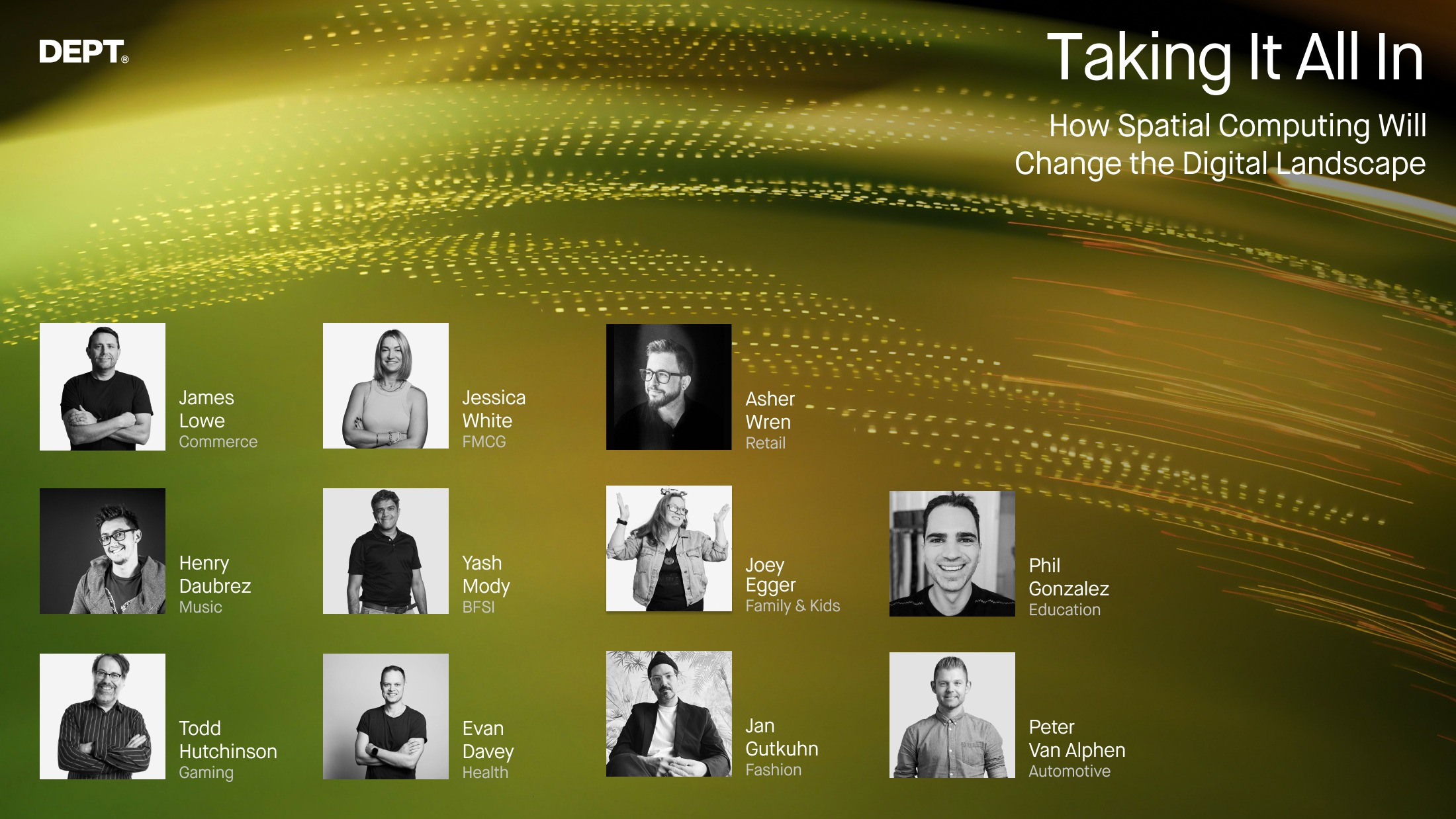

Commerce
James Lowe – VP Commerce APAC
The goal of an e-commerce website is, ideally, to sell products, and they do that by simulating real life shopping experiences online. We add products to a virtual ‘cart’ and virtually visit the ‘checkout.’ The reality is, though, that there is still a huge gap between real-world touch and feel experiences talking to a salesperson and online shopping. This is changing.
From immersive experiences, viewing a rug in your room or a hologram of yourself sized with those new jeans, the effect of spatial computing in reshaping the e-commerce experience will be massive. It’s not only about being able to try out that rug in your living room but how that will affect light and sound, changing your experience of your own home forever.
Spatial computing, whether AR, VR, or any reality that edges us closer to replicating real-world shopping and in-store personalisation, will change how we shop forever. We have only scratched the service.
The targeted use of these technologies will be important. Successful brands will use spatial computing subtly (not everyone has an Apple Vision Pro!) and AI passively to bring users on the journey where required and blow our minds at other touch points in the mixed reality commerce journeys of the future.
This is a moment for commerce brands to set themselves apart in a field wide open with opportunity. Brands that continue creating immersive, personalised shopping experiences, replicating and augmenting real word experiences as the technology evolves, will emerge as leaders.
Best encounter with spatial computing so far?
I bought a trampoline for kids for Christmas this year. The AR feature on the site allowed me to video my front yard in real-time, position the trampoline in the yard, and walk around it, seeing the placement from different angles. I was surprised at how accurate it was. I got my tape measure out to verify (didn’t trust the tech!), and the virtual placement was spot on.
This was a super helpful application of AR enhancing my buying experience. I had limited space in my yard, so this augmented view of my yard sold it for me. AR placing products in situ is not the most cutting-edge example of spatial computing, but it was the best example I have personally experienced and led me to the checkout.

FMGC
Jessica White – General Manager Creative & Content Australia
I’ve been a storyteller my entire life. Sitting around the table with my family, we took turns to see who could tell the best story. I love the creativity of it, the challenge of finding the right hook, and helping brands become famous. Famous in the category, internally, and most importantly, famous with consumers, making their product the one they reach for first.
Fast forward 10 years, storytelling is more diverse than ever, with TikTok as a platform for entertainment, self-expression, and search! Personalisation gives tailored brand experiences across email, social channels, and online shopping. Technology is making it easier and easier to reach consumers and tell them richer stories. Spatial Computing is enabling us to seamlessly merge the physical world with the magical world of digital. Picture consumers virtually learning how to brush their teeth properly or wash their hands effectively in their own spaces, testing, learning, and experiencing them firsthand.
The digital world as we know it has changed forever. Things are only going to get more exciting from here. We’re taking storytelling to a new dimension, and I’m here for it!
Best encounter with spatial computing so far?
From virtually trying on beauty products to unlocking a world of interactive content and promotions, spatial computing empowers marketers with the tools to weave captivating stories. Consider the experience of trying on different makeup looks in augmented reality or seamlessly accessing additional information and promotions while browsing in-store. One may be more functional than the other, but both avenues create a richer storyline for consumers to explore, transforming mere transactions into memorable experiences.

Retail
Asher Wren – VP Growth Americas
Spatial computing will change the game in commerce in several ways— from behind-the-scenes operations and logistics like inventory and supply chain management and helping warehouse staff to locate items more efficiently through to creating more immersive, contextually relevant customer experiences at-home or in-store.
Industries that typically rely on more tactile, white-glove customer journeys— e.g., luxury fashion, auto, home furnishings, etc. will see a completely revolutionised retail experience. Shopping experiences in those industries are increasingly digital. Still, nothing compares to being able to feel the finish on an Eames chair, feel the weight of a Rolex in your hand, or see the movement of a Gucci garment.
Spatial computing will put customers on their catwalks in this season’s must-have, in the driver’s seat of a luxury car, or in a newly decorated and kitted-out home. It’s the next step in bringing elevated shopping experiences for high-ticket items into the home, changing retail forever.
Best encounter with spatial computing so far?
I’m a big fan of using augmented reality to make static artwork come to life. It’s an oldie but a goodie— There’s something very punk rock DIY about the MoMAR concept— a group of artists leveraging augmented reality to overlay digital art onto traditional works of art in galleries.
The concept challenges the notion of what art is and pokes fun at the elitism of the fine art world. On the other end of the spectrum, for businesses, using AR to bring billboards to life can create engaging, buzz-worthy brand activations while also making existing OOH media buys work harder by establishing measurable paths to purchase from static billboards to digital/e-commerce.

Music
Henry Daubrez – CEO & COO Dogstudio/DEPT®
Past the expected entertainment outcome from a device like the Apple Vision Pro, there’s a huge potential for learning new skills.
I used to (badly) play the guitar as a teenager, by myself, at home, and I do remember printing sheet after sheet of chords and going through the painful journey of constantly moving from the sheets to the fretboard. I mean, nothing crazy, but it was still getting in the way of me learning a new skill.
Now, looking at the future of spatial computing and offering information contextually, there’s a future in which learning music can be offered directly in relation to the instrument, showing you the chords next to the fretboard or the notes on top of the piano keys. Even better, leveraging AI, there’s a very short path to suggesting the next note and giving you the fundamentals of improvisation.
This is one simple example but music, being attached to a different of our senses, has the potential to be experienced differently thanks to the evolution of headset technologies.
We’re still early despite the dozens of years separating us from the initial generations of headsets and the most recent ones.
Technology is finally getting to where we can experience the full expected potential: a seamless, integrated, contextual experience intertwined with reality. The Apple Vision Pro and the recent Quest3 are one iteration closer to that dream but not fully there yet.
I’m looking forward to the possibilities of experiencing and learning music (and a lot of other things) in a visual, natural, and neck pain-free manner.
Best encounter with spatial computing so far?
As mentioned, all the passthrough (and therefore avoiding pure VR) experiences around the learning of new skills are fascinating to me, whether it’s about cooking, learning an instrument (check PianoVision), or learning a trade. People directly think about gaming when looking at these devices, but the untapped education market is endless.

BFSI
Yash Moody – CTO APAC
Spatial computing presents an unparalleled opportunity to improve financial literacy worldwide by making complex concepts more accessible and engaging across diverse age groups and demographics. By leveraging immersive technologies, financial education can become more interactive, intuitive, and inclusive, empowering individuals to make informed financial decisions and participate more effectively in the global economy.
The convergence of fintech innovators and traditional financial institutions facilitated by spatial computing can lead to the development of groundbreaking products and methodologies prioritising human-centric design and user experience. This collaboration can drive innovation and efficiency while addressing the evolving needs of consumers in the digital age.
Best encounter with spatial computing so far?
Several financial organisations have explored virtual branches using VR to make banking more accessible and inclusive. This makes banking more cost-efficient, secure, accessible, and personalised.

Family & Kids
Joey Eggar – Executive Director Games & Emerging Tech
When it comes to tech and kids, at the end of the day, it’s not so much about the technology, it’s about the experience.
For kids, it’s about what’s fun, intuitive, and engaging: What can tell a good story. What can provide a cool challenge? And for their caregivers – is my child safe using this device and playing this experience?
It’s our job to create spatial interactive experiences that feel natural to that device and are intuitive and safe for the user to play. We want the experience to work for the end user, not just for the device.
We’ve been working on variations of Spatial technology since 2012, kicking off with the award-winning The Hidden Park, which used a form of AR before AR was formally integrated into phones. Since then, we’ve crafted many projects utilising AR with well-known kids’ brands such as The Wiggles and Sesame Street, VR to help kids reduce stress and anxiety during needle procedures with the Webby Award-winning SmileyScope, and with XR currently having fun with some projects that blend Mixed Reality headsets with real-world experiences.
With all our spatial work, we know that the tech is just a tool, and it’s the enriching experiences it facilitates that truly matter.
Best encounter with spatial computing so far?
It’s very simple, but the XR devices such as APV, Hololens, MetaQuest, and MagicLeap, when you initially map the environment around you. They all do it differently, but I never get bored of it, and it makes me feel like I’m on a Star Trek holodeck.

Education
Phil Gonzalez – Director of Engineering
Spatial computing, along with mixed and augmented reality technology, has the potential to redefine the educational paradigm.
If we were to bring a time traveler 200 years from the past to the present, 99% of our world would look vastly different to them: a classroom, however, would look mostly the same: a set of desks facing a presenter at the front of a room. While online, self-paced, and digital learning has started to take form in the last couple of decades, it still isn’t a stand-in for the in-person experience. You don’t have to look further than standardised test scores dropping dramatically during the COVID-19 lockdowns for evidence of this.
However, this is fortunately on the path towards change. VR/MR headsets allow learners to step into nearly any subject matter virtually. Want to learn about the human body? Shrink yourself down to the size of an organelle and explore it yourself! Perform lab observations in VR and later generate reports about those observations on a traditional computer. Studying WWI? Step into the moment of Archduke Franz Ferdinand’s assassination and political turmoil and speak with virtualised eyewitnesses.
MR/VR also enables a sense of presence missing from virtual learning experiences. With an online can an instructor know if students are engaged and understanding the material or disengaged and lost? Live video calls can sometimes help, but monitoring the facial expressions of 20+ students over Zoom doesn’t always work. Newly developed VR technologies enable eye tracking and facial gesture mapping that allow virtual avatars to appear confused, lost, or engaged and learning.
Best encounter with spatial computing so far?
Arizona State University’s DreamScape Learn. I had the pleasure last year of demoing some of the courses they offer and was blown away by the level of interactivity.

Gaming
Todd Hutchinson – Creative Director
Virtual Reality has never managed to live up to the promise of Ready Player One. Although it’s not surprising, only a select few are happy to block out their reality in favour of a digital one, and then there’s the motion sickness… blargh.
But spatial computing is a very different and vomit-free beast. It offers a brave new future, where real and digital worlds collide to make both cutting-edge and simple intuitive experiences.
Once the hardware reaches the point of looking like ordinary glasses, I can imagine everyone wearing them to engage in daily digital activities. From a gaming perspective, there are countless opportunities to integrate gameplay with the world around. Hide behind the couch to avoid enemy fire in an FPS, solve escape room experiences in your bedroom, or create and manage complex cities in your lounge.
The future seems bright, I gotta wear [spatial computing] shades.
Best encounter with spatial computing so far?
First Encounters. It’s a very simple and fun game in which players blast away at fuzzy little aliens to capture as many as they can before time runs out. The cool integration of Spatial Computing is that it starts off in the player’s room, and as they fire their blasters, they blow holes in their walls to reveal an alien world beyond. The aliens move from their alien world into the player’s room, and the player has to walk around to find hidden aliens. By the time the round is up, the walls are destroyed, and the player is now in the alien world.

Health
Evan Davey – VP Growth APAC
In healthcare, spatial computing isn’t just about enhancing patient experiences; it’s about revolutionising care delivery. Imagine surgeons seamlessly accessing patient data in real-time during procedures or medical professionals conducting virtual simulations to refine treatment plans.
Spatial computing empowers us to bridge geographical gaps, providing remote consultations and monitoring for patients in rural areas. However, it’s not without its challenges—ensuring data security and privacy remains paramount.
Yet, the potential to improve outcomes and streamline processes is undeniable. As we navigate this transformative landscape, collaboration between healthcare providers, technologists, and policymakers will be crucial in realising the full benefits of spatial computing for the industry.
Best encounter with spatial computing so far?
I’m absolutely taken by the breadth of use cases for the Apple Vision Pro, so it’s hard to nail it down to just one example. One experience I’m particularly looking forward to being an Australian – and air travel out of the country taking at least 8 hours – is taking an Apple Vision Pro onto the plane, watching movies in what will feel like a theatre rather than a cramped economy seat and working in that same seat on a projected 4K screen, rather than bending over my iPad. Add to that the privacy that comes with the APV, and I’m pumped to get onto that plane!

Fashion
Jan Gutkuhn – Director Web3
Spatial Computing was invented for the fashion industry. In the world of fashion, the allure of the runway is undeniable. Yet, the digital representation is full of limitations and disappointments. Spatial computing offers a lifeline, bridging the gap between the real and the virtual. It’s a designer’s dream becoming reality, setting the industry free.
The biggest opportunity lies in creating more human and emotional experiences through 3D – directly from the creative director’s imagination. No proxy, no samples, no shootings. Fully immersive experiences evoke a sense of wonder and delight – something missing in the realm of the 2D screens and CR-optimised online shops of today.
Imagine entering an immersive, highly emotional brand universe, seeing yourself in the latest runway looks, and chatting with a virtual stylist who understands your unique tastes and preferences based on your body measurements. Or attending a virtual fashion show where you can interact with models and designers in real time. For as long as you want – and you will want to stay and get lost, and shop…
These are the experiences that bring fashion to life in ways that were previously unimaginable. It allows brands to democratise the front row, inviting anyone and everyone to immerse themselves into the brand’s universe like never before.
This is it. Unlimited creativity and pure emotion. Directly from the designer’s brain into your Apple Vision Pro.
Best encounter with spatial computing so far?
Our work with H&M on creating their virtual showroom. 69% of the respondents said that the showroom had piqued their interest in a virtual H&M brand experience.

Automotive
Peter Van Alphen – Strategy Director Growth Europe
The world of mobility is rapidly changing from physical environments to digital experiences. Legacy manufacturers and emerging industry players are reinventing and rethinking the traditional paradigms. Electric vehicles, digital-first buying models, technology-led information systems, and self-driving solutions are leading the way in society and will become the standard.
In the realm of automotive, spatial computing is reshaping the driving experience, both within and beyond the vehicle’s interior. Innovations such as Augmented Reality Dashboards, Advanced Driver Assistance Systems, Predictive Maintenance, and Smart Parking Solutions exemplify the dynamic changes transforming the automotive industry. I am particularly excited about the potential of spatial computing to address traffic congestion and enhance driving safety.
At DEPT®, we’re at the forefront of innovation in the automotive landscape. We’re strategically positioned to provide comprehensive end-to-end customer experiences, leveraging the power of AI, technology, creativity, and media.
Best encounter with spatial computing so far?
I am deeply impressed by the spatial computing solutions that Tesla is developing and integrating into their vehicles. From the adaptive cruise control feature to the sophisticated infotainment systems and the advanced navigation system capable of recognising environmental surroundings, Tesla is enhancing driving safety and security significantly. I eagerly anticipate the innovations and advancements that lie ahead.
Fostering creativity and curiosity
Spatial computing has the power to revolutionise how we interact with technology, reshape industries, and redefine user engagement. It’s a call to action for businesses to embrace this technology as a catalyst for innovation and growth, unlocking new opportunities to create immersive, personalised experiences that transcend traditional boundaries.
However, realising this potential requires overcoming challenges such as data security, logistical integration, and ensuring equitable access. Despite these hurdles, the consensus is clear: The future of spatial computing is limitless, and it’s up to businesses to seize the moment and shape the digital landscape of tomorrow.
With a deep understanding of emerging technologies and a track record of delivering cutting-edge digital solutions, our teams at DEPT® are uniquely positioned to guide businesses through the complexities of spatial computing integration.
Creativity x AI: An interview series exploring the near future
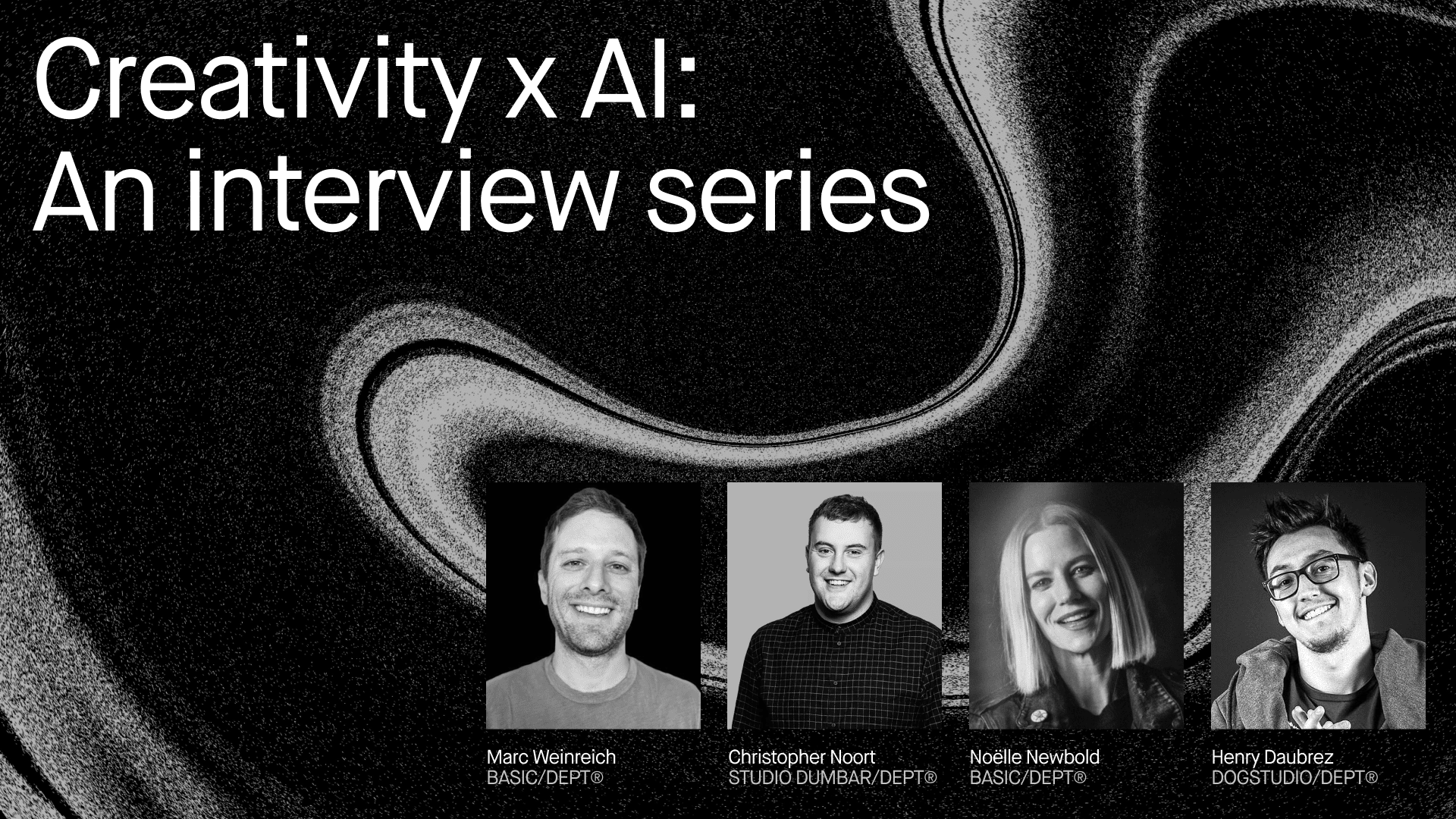
Insights
View all insights
When international automaker smart broke into the electric vehicle market, it needed to bring its legacy customers along for the ride.
But it wasn’t enough to simply promote the release of its new “smart #1” model—the brand needed to fully revamp its customer journeys to convert its existing audience into EV buyers.
Using Adobe Journey Optimizer, DEPT® and smart built a new customer relationship management and marketing automation program to support the automaker’s updated strategy. In less than nine months, we implemented a new campaign strategy that included 11 customer journeys for new and returning users. And it worked. Our first campaign resulted in 11% of smart’s database converting into pre-order customers, a 300% higher conversion than the automotive industry benchmark.
Since then, the project has expanded to more than 500 emails sent annually, and email has become one of the key drivers of direct and indirect revenue for smart. By leveraging the Journey Builder, Audience, and Profiles sections, smart provides an unprecedented level of personalisation within its customer experience.
Turn prospects into customers with better customer journeys
Amidst today’s digitally driven landscape, it’s crucial that businesses create seamless, personalised customer journeys. And as exemplified by smart’s successful launch into EVs, Adobe Journey Optimizer is a powerful solution for brands looking to enhance their customer experiences.
But at the same time, a tool is just a tool. The strategy and people behind the tool drive the results.
With deep expertise in Adobe products, marketing automation, and content creation, our team has some helpful ideas for creating better customer journeys and experiences via Adobe Journey Optimizer. To orchestrate holistic, effective journeys, we recommend the following.
Define goals and customer journey stages
First things first. Before diving into the software, clearly define your customer journey goals and estimate the time to achieve them.
Identify the touchpoints along the customer journey and prioritise them based on their impact. Think of greater business goals like revenue, margin, or market share but also smaller goals like conversions and CTR.
Gather and analyse customer data
Collect all available data about your customers from various sources and spend the time to analyse it properly. This will help you understand your customer personas, define goals, and identify the touchpoints where personalised experiences can be created.
We most often see two main challenges around data.
- With customer data, it’s often scattered and requires integration before you can get utility from it. Depending on external factors, this might be a huge undertaking, so it’s worth strategising with your data team.
- Combine customer interests with customer journeys. Not just demographics but preferences, preferred channels, and purchase history. When paired with where a customer is in the buying journey, it can add that personalised element that drives conversion.
Consider integration with other systems
Determine if you need to integrate Adobe Journey Optimizer with other systems (like your advertising platform) to enhance data collection and streamline processes. This can provide a more comprehensive view of your customers and enable seamless platform communication.
For example, at DEPT®, we enrich customer profiles with specific ads the customer clicked on. This helps us understand what their initial interests are.
For those without advanced analytics platforms like Adobe Journey Analytics, AJO’s reporting and SQL capabilities offer valuable tools for monitoring profile/channel engagement and troubleshooting.
Collaborate with cross-functional teams
Assemble a team of specialists who can create end-to-end experiences aligned with your goals and touchpoints. Collaboration between experts from sales, service, and marketing is crucial to ensure a holistic approach to customer engagement.
Our biggest tip here is to make sure your whole team works towards the same goal! From our experience, this simple act is often overlooked, but it can make a difference in large teams. Balance mandates for individuals with collaboration days so individuals can dial in their expertise while keeping a single north star. Celebrate success.
Altogether, Adobe Journey Optimizer can help your marketing team deliver highly relevant, personalised experiences.
However, despite its integration capabilities and user-friendly interface, it’s important to remember that Adobe Journey Optimizer is still a tool—and you need expert collaboration, a deep understanding of your audience, and a data-driven strategy to deliver truly effective end-to-end customer journeys.
As a long-time Adobe partner, DEPT® has more than 500 team members who specialise in helping brands harness the full potential of their Adobe products. So, let’s discuss how you can most effectively use Adobe Journey Optimizer to create and manage personalised web experiences.
Insights & work
Questions about customer journeys?
Marketing Automation & Client Director
Katrine Andersen
From investing heavily in developing electric vehicles, to shifting towards direct-to-consumer models and exploring digital-first experiences both inside and outside the car, to evolving consumer preferences, automakers need to become more tech-savvy and data driven to adapt and thrive in an evolving landscape.
DEPT®/Automotive is an expert team dedicated to building the future of automotive – collaborating with some of the world’s most respected brands, innovative startups and forward thinking organisations.
Driving mobility
The global automotive industry is at a critical juncture due to shifting consumer needs. Delivering a frictionless buying experience has become too complex. Standing out and building trust amongst consumers is highly competitive and difficult. And it’s a struggle to balance offering user-friendly interfaces, advanced in-car features and EV offerings, all at the same time.
Based on our 20+ years of experience in the automotive industry and working for some of the leading brands like Audi, smart, Triumph Motorcylces, and Piëch, we are well-positioned to lead the way in technology and marketing to help automotive brands stay ahead.
DEPT®/AUTOMOTIVE is the answer to the challenges tech and marketing leaders face:
Revolutionising the car buying experience
We build brands, and craft stories and experiences that customers want in a digital-first world. Our unique creative, AR and 3D skills create experiences such as online showrooms that allow users to configure their dream car and conveniently buy it online via user-friendly and intuitive online platforms.
Connecting the dots for personalised marketing
With precision targeting and AI, we deliver the perfect message at the right moment and location to attract potential car buyers and push subscription and pre-purchase models across the customer journey. We keep customers engaged and nurture them towards the sale by leveraging first-party data.
Preparing for the future of driving
From advanced infotainment systems to smart assistants, we transform the way clients and their customers interact with vehicles. Our user-friendly solutions ensure seamless charging experiences, paving the way for a sustainable future.
Deep industry experience






















We’ve had the pleasure of working with some of the world’s most innovative automotive brands
Revolutionising the car buying experience
We help automotive brands to deliver pioneering, frictionless buying experiences.
ALL SERVICES
Brand and creative
We craft the stories that your audience wants to hear. Whether it’s around speed, range, or luxury, we leverage brand strategy, creative thinking, and motion design to infuse creativity that is profoundly human and culturally significant.
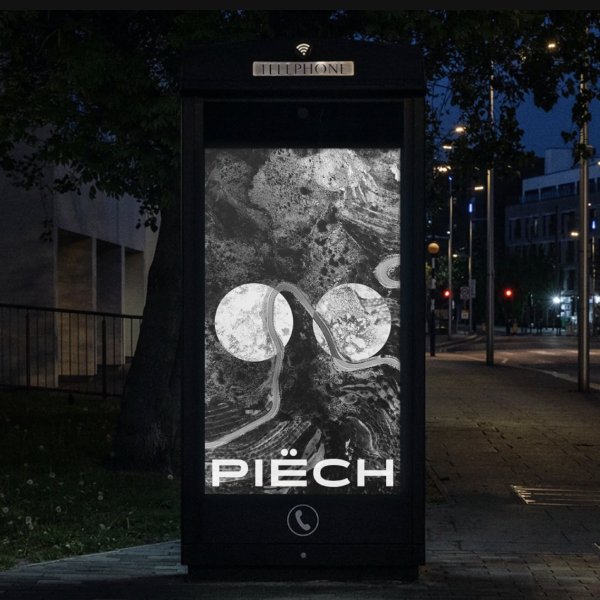
360 campaigns
We excel in developing tailored, end-to-end creative marketing campaigns that resonate with your target audience. We craft cohesive strategies spanning the customer journey and deploy creative automation for global reach, whether for customer acquisition or lifecycle marketing.

AR and 3d
Our distinctive blend of creativity, AR, and 3D expertise enables us to craft online showrooms that allow users to configure their dream car and conveniently buy it via user-friendly and intuitive online platforms, turning the car exploration and customisation process into a truly delightful experience.
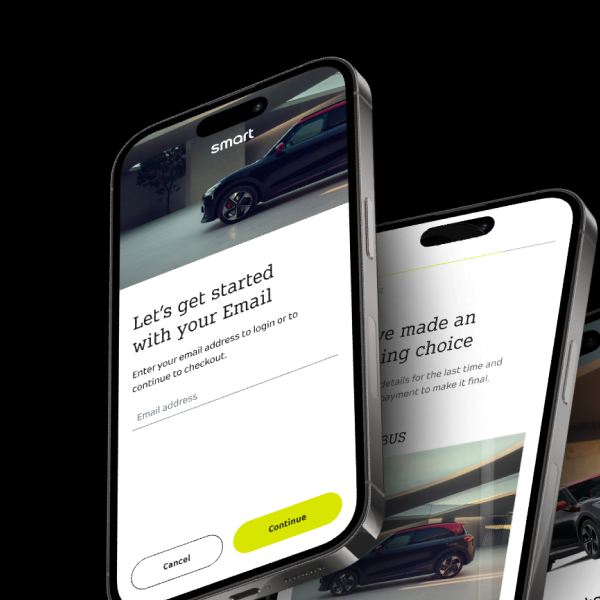
CX and commerce
We provide end-to-end solutions that enhance conversion rates and sustain customer engagement. We can help your platform seamlessly blend inspiration, engagement and sales.
Connecting the dots for personalised marketing
With precision targeting and AI, we deliver the perfect message at the right moment and location to attract potential car buyers and push subscription and pre-purchase models. We keep your customers engaged and nurture them towards the sale by leveraging first-party data.
View All Cases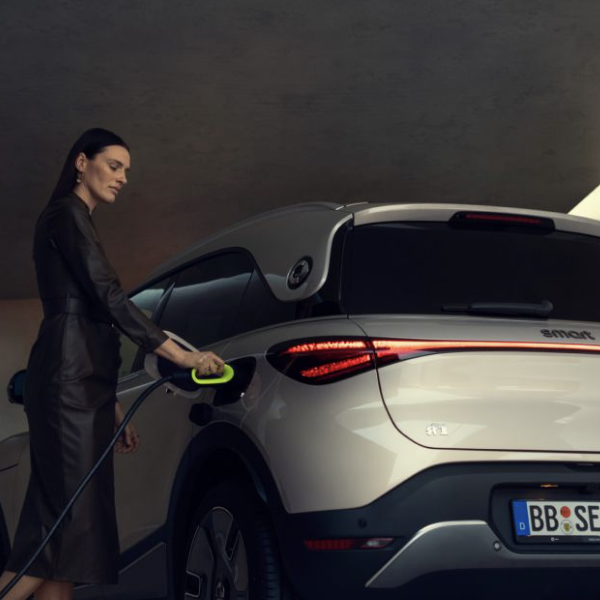
Full Funnel Media
Our media strategies cover the entire spectrum, from raising upper-funnel awareness through various channels to driving performance and conversions via search engines and specialised publishers like Carwow. We optimise budget allocation for maximum efficiency and effectiveness, employing cutting-edge media solutions to accelerate your business outcomes.

Data driven marketing
We employ advanced data and segmentation strategies to deliver highly personalised experiences. Through a deep understanding of your audience and consumer behaviour, we fine-tune your marketing campaigns with precision through methods like incrementally testing and data driven personas, resulting in increased revenues and reduced ad waste.

Marketing automation at scale
We deliver messages that are not only timely but also tailored to specific locations, ensuring that customers remain engaged and are directed towards making a purchase. Our strategy hinges on the use of precision targeting, AI and first-party data to unlock customer journeys, foster loyalty, and seamlessly automate processes.

Analytics and Business Intelligence
Our team of data and intelligence experts will configure, collect and seamlessly integrate your data, and extract actionable insights. Additionally, we harness advanced analytics techniques to make evidence-based predictions that not only meet customer needs but also elevate brand perception.
Preparing for the future of driving
From advanced infotainment systems to smart assistants, we transform the way clients and their customers interact with vehicles. Our user-friendly solutions ensure seamless charging experiences, paving the way for a sustainable future.
View All Cases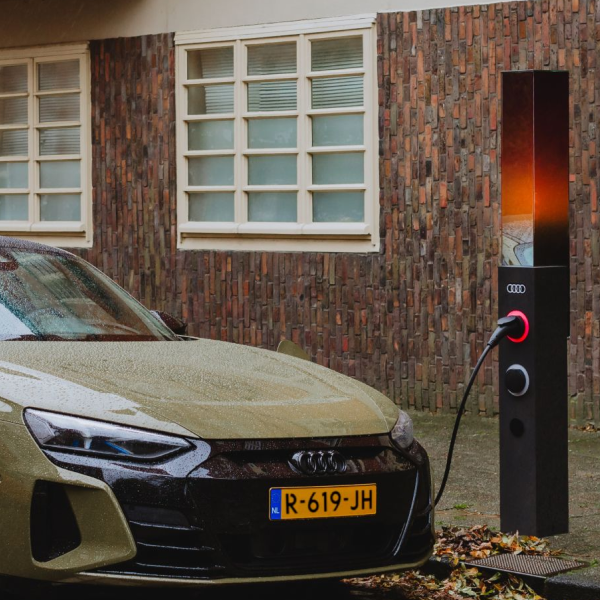
Product Innovation
We revolutionise the interaction between clients and their vehicles with enhanced in-car features and state-of-the-art infrastructure. Our user-friendly solutions guarantee smooth charging experiences, on-screen interactions, and innovative product offerings.

Connected experiences
With the emergence of larger displays on the dashboard and onboarding the power of 3D gaming engine, we unlock a realm of possibilities for customisation and personalisation.

self driving solutions
Our experience in infotainment systems and content/UX/UI can help automotive brands deliver an exceptional experience for passengers. And we can help brands establish the right marketing strategy to ensure consumers are comfortable and excited about taking advantage of this cutting-edge technology.

Augmented information
Leveraging augmented information technology via windshield displays and similar innovations, we aim to streamline your space and deliver precise information at the perfect moment, right within your field of view. Our in-vehicle screen experiences are designed to enhance your driving convenience and safety, making your journey smoother and more secure.
Drop us a line
Drop us a line to discuss how we can work together to achieve your goals.
Insights
VIEW ALL INSIGHTSFrom vision to voice: How AI image generation and voice translation are revolutionising digital media

The evolution of AI image generation
Over the past few years, we’ve witnessed a remarkable evolution in AI-driven image generation. From the early days of basic pixel manipulations to the increasingly detailed capabilities we see today, AI has continually pushed the boundaries of what is possible.
Recently, OpenAI introduced DALL·E 3, the latest update of their image generation tool. DALL·E 3 represents a leap forward in our ability to generate images matching the provided prompts. This newest version lets you tell ChatGPT all your visual desires and observe as the AI brings them to life.
The benefits and challenges of AI imagery
Embracing the power of AI image generation opens up new possibilities in the digital media landscape. One of the key improvements of DALL·E 3 is its ability to understand more nuance and detail, allowing users to make their wildest ideas come to life.
Versatility
AI imagery knows no boundaries, offering many options from abstract to hyperrealistic imagery. Whether you’re asking for surreal dreamscapes or a lifelike representation of a unicorn, AI image generation can bring it to life with significant precision.
Innovation
Another characteristic of this tool is its ability to conjure images that might not exist in our tangible world. This opens new doors for more creative designs but also poses challenges, particularly regarding copywriting and ethics. Since the AI-generated content is based on existing data, it threatens the authenticity of the generated content.
Customisation
Image generation has made the tailoring of images to specific customer or business needs a more streamlined process.
As the digital landscape evolves, understanding both the opportunities and complexities of AI-generated imagery is essential for businesses, as the implementation of this tool can be beneficial but also poses its challenges.
Challenges with DALL·E 3
DALL·E 3 distinguishes itself from previous forms as it has an added focus on safety mechanisms to prevent the tool from generating violent, adult, or hateful content.
Also, DALL·E 3 is designed to avoid generating images of real-life public figures or imitate the style of living artists. To combat misinformation and image manipulation issues, developers are experimenting with creating a so-called ‘provenance classifier’ tool to recognise whether an idea originated from DALL·E 3. While this tool is still in its experimental phase, it recognises the issues that come with AI-generated imagery.
Integrating AI imagery into marketing
Successfully introducing AI imagery opens many doors for marketers and brands. Here are a set of benefits for your business:
- Branding and logo design: AI Image generation tools have the potential to incorporate elements such as brand values, colours, and additional descriptions, offering a wide range of options for logo designs and branding elements. Marketers can swiftly test and adjust various logo designs by inputting keywords and modifying design directions, then refining the last details based on how the target audience responds.
- Creatives for ad campaigns: AI image generation can generate unique and eye-catching visuals based on campaign themes or keywords. For example, if you have a certain vision for an ad campaign but can’t realise it, the AI tool can step in as a brainstorming tool, sparking creativity and leading to more engaging campaigns.
- Content creation: With AI image generation, marketers can craft specific visuals without extensive photo shoots or stock photo searches. The tool can create images that perfectly align with the content’s mood and message.
- Prototyping: Before committing to a final design or visual campaign, artificial image generation can help quickly generate prototypes. Marketers can visualise website banners, app interfaces, or product packaging, making adjustments based on stakeholder feedback without heavy design commitments.
- Personalisation: AI-generated imagery can play a pivotal role in dynamic content personalisation. Depending on user behaviour, location, or preferences, AI Image generation could customise visuals in real-time. For instance, users browsing travel deals might see a tropical beach scene if they’ve shown interest in beach vacations or a serene mountain landscape if they’ve searched for hiking trips.
The potential of tools like DALL·E 3 in marketing cannot be overstated. These tools masterfully integrate creativity with the accuracy and scalability of AI, paving the way for a future where marketing visuals are more dynamic, resonant, and tailored than ever before.
The voice revolution: AI’s leap into audio generation
Not only does AI image generation hold great promise, but the advancements of AI voice generation tools are also making significant progress. One of the most important advancements is AI voice translation, which can retain the speaker’s original voice. For instance, Spotify has launched a voice translation AI tool that translates everyone’s favourite podcast into alternate languages, keeping the podcaster’s original voice.
Harnessing AI voice tools in marketing
Using AI voice generation tools unfolds many opportunities for marketers and brands. There are numerous ways in which brands can utilise this technology to their advantage. Below, we highlight some of the most important benefits for marketers:
- With the ability to reach a global audience, these tools democratise access to content, allowing brands to resonate with diverse demographics and fostering more inclusive consumer engagement.
- Implementing this tool is cost-effective, allowing businesses to enhance their content generation capabilities while maintaining high-quality standards without substantial investments in time and resources.
- Stakeholders value a consistent brand voice. AI-driven tools enable marketers to ensure a uniform and identifiable brand presence across diverse markets.
- Real-time translations add another layer of convenience as they help break down communication barriers instantly and increase understanding and accessibility.
- The AI tools offer unparalleled flexibility, adjusting to different content types and settings while being able to translate content into other languages.
Challenges with AI voice tools
While voice generation is transformative in various applications, it poses critical challenges. One is the loss of nuance, as emotional undertones and intent in human speech can be misunderstood, leading to the loss of the message’s integrity. AI tools have difficulties understanding and translating idioms, metaphors and informal expressions, leading to misinterpretations and inaccuracies. Also, ethical considerations arise as voice translation tools pose the risk of generating culturally inappropriate and disrespectful content.
To mitigate these risks, it’s not only important that human translators can control the quality of the content; they should actively do so. Implementing regular quality checks and maintaining consistent human interaction with AI systems are crucial steps to ensure that the voice translations respect cultural nuances and maintain the intended meaning, thereby upholding both accuracy and sensitivity in communication.
Another challenge is the lack of personalisation and creativity. AI voice translation and generation tools often fall short in meeting the specific needs of individual users and markets. Therefore, a human touch is still necessary to tailor the content to specific audiences.
Lastly, voice cloning brings forth significant concerns and ethical dilemmas, especially when it comes down to malicious intentions such as creating deepfakes.
In conclusion, while challenges exist in voice translation and generation, they present opportunities for improvement. Embracing collaboration between human expertise and AI capabilities can enhance communication. The ongoing pursuit of seamless, personalised, and ethically sound voice translation and generation holds the potential to significantly benefit global connectivity.
DEPT®/AI
By leveraging the presented AI capabilities, DEPT® positions itself at the forefront of innovation, driving change and shaping the future of brand communication. We have a strong focus on AI practices to help brands solve complex challenges and increase productivity through turnkey AI solutions and innovative creative experiences.
With a multidisciplinary team of 400+ creatives and engineers, our dedicated DEPT®/AI practice is your implementation partner. Our team is committed to integrating AI in an ethical and progressive way and has already created many innovative projects for big and small brands. Contact us today!
More insights
Questions?
Digital Strategist
Dennis E. K. Nielsen
In today’s fast-paced digital world, advertising has undergone a profound transformation. One of the most notable shifts in advertising over recent years has been the remarkable evolution of programmatic advertising. But what’s the hype about, and why is it still so relevant?
What is Programmatic Advertising?
Now, organizations must not refrain from implementing programmatic advertising in their business. Programmatic is an auction-based way of buying ad placements that makes reaching the right user, at the right time with the right message possible.
It might sound complicated, but it’s actually quite simple. Programmatic advertising refers to the automated buying and selling of ad inventory. And here’s the best part — this automation utilizes data, ensuring ads are tailored to the right audience, enhancing relevance and engagement in only a fraction of a second.
Breakdown of the key features
1. Real-time Bidding (RTB): Picture this – a real-time auction for digital ad space, unfolding in the blink of an eye, typically in the milliseconds it takes for a web page to load. Advertisers bid on an impression; if they win, their ad is instantly displayed.
2. Precision Targeting: Programmatic platforms use vast amounts of data to determine which ads to show to which users. This ensures that ads align seamlessly with the viewer’s digital footprints – interests, location, and browsing habits.
3. Efficiency and Speed: The entire process of ad selection, bidding, and placement can happen in the time it takes a webpage to load, ensuring that the most relevant ads are shown to the user.
4. Data-Driven: Data analytics allows advertisers to optimize their campaigns in real-time, adjusting strategies based on performance metrics and audience engagement.
Why choose Programmatic Advertising?
- Efficiency: Traditional advertising methods often involve manual negotiations and preparations. Programmatic advertising, on the other hand, streamlines this process, making it quicker and more efficient.
- Real-time Optimization: Programmatics advertising allows for real-time ad adjustments, ensuring precise targeting at the right time.
- Precision Targeting: Programmatic platforms utilize vast amounts of data to determine which ads to show to which users. This means that advertisers can enhance personalisation when targeting their audience.
Programmatic Advertising’s Role in Personalisation
Programmatic advertising has become a powerful companion in an era where consumers expect personalised experiences. It allows businesses to go beyond generic marketing approaches and create messages tailored to individual preferences, whether it’s tailoring ads based on a user’s favourite shopping habits, hobbies or geographic location. By leveraging data analytics and AI-driven insights, programmatic advertising can dynamically adjust ad creatives, formats, and delivery times to resonate with each user. This level of personalisation not only enhances user engagement but also strengthens a deeper connection between businesses and their audience. In a world where advertising constantly surrounds you, the capacity to provide content that genuinely resonates with each user sets programmatic advertising apart.

“As the programmatic landscape continues to evolve, we remain committed to staying ahead by testing, learning, and adapting to the latest trends. Whether it’s enhancing personalisation, brand safety measures, or AI, we’re dedicated to exploring new possibilities and leveraging the latest technologies to help our clients achieve their goals.”
Mette Schnor Bailey, Programmatic Director, DEPT®
How we can help
To accelerate your business organizations, it’s essential to recognize the implementation of programmatic advertising. Our dedicated specialists offer help in implementing Programmatic Advertising – DEPT® into your business such as display and video advertising, real-time bidding and direct deals with publishers.
Programmatic advertising may seem like a complex black box, but with the right strategy and approach, it can be a powerful tool for meeting campaign and business goals. At Dept, we strive to demystify programmatic and showcase its potential alongside other digital channels in close collaboration with our clients.
Mette Schnor Bailey, Programmatic Director, DEPT®
Questions about Programmatic Advertising?
Programmatic Director








